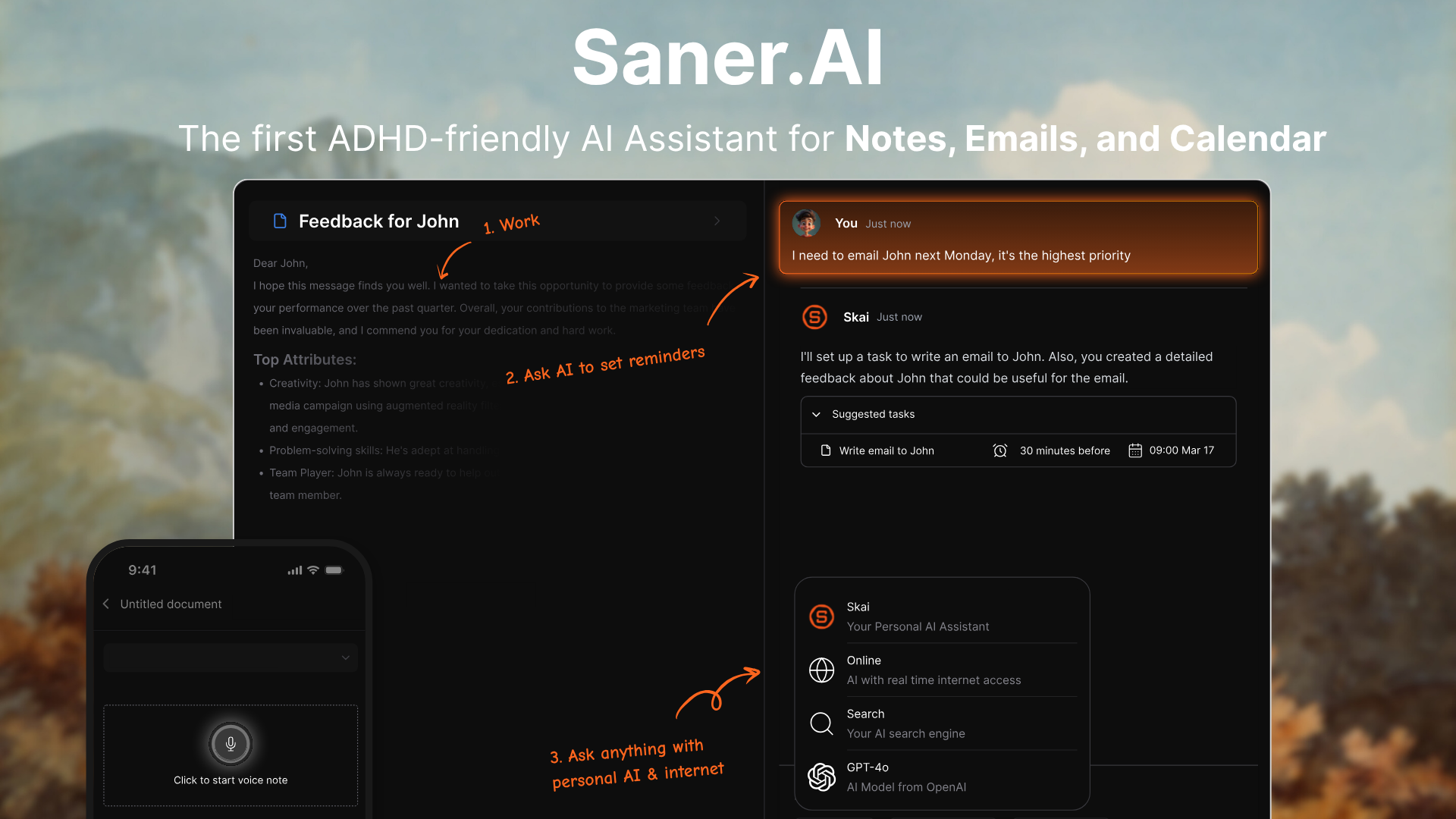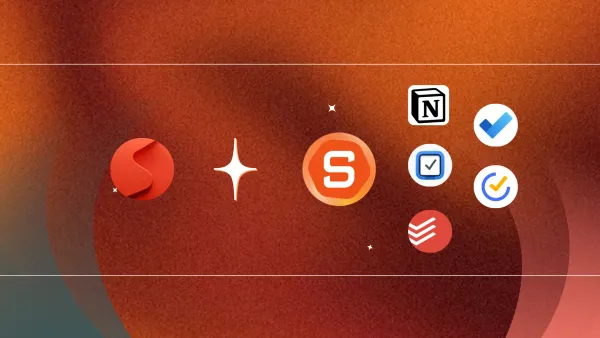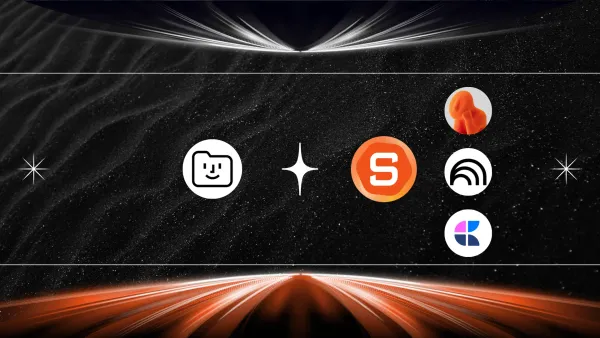7 Steps to Create an ADHD-Friendly Environment
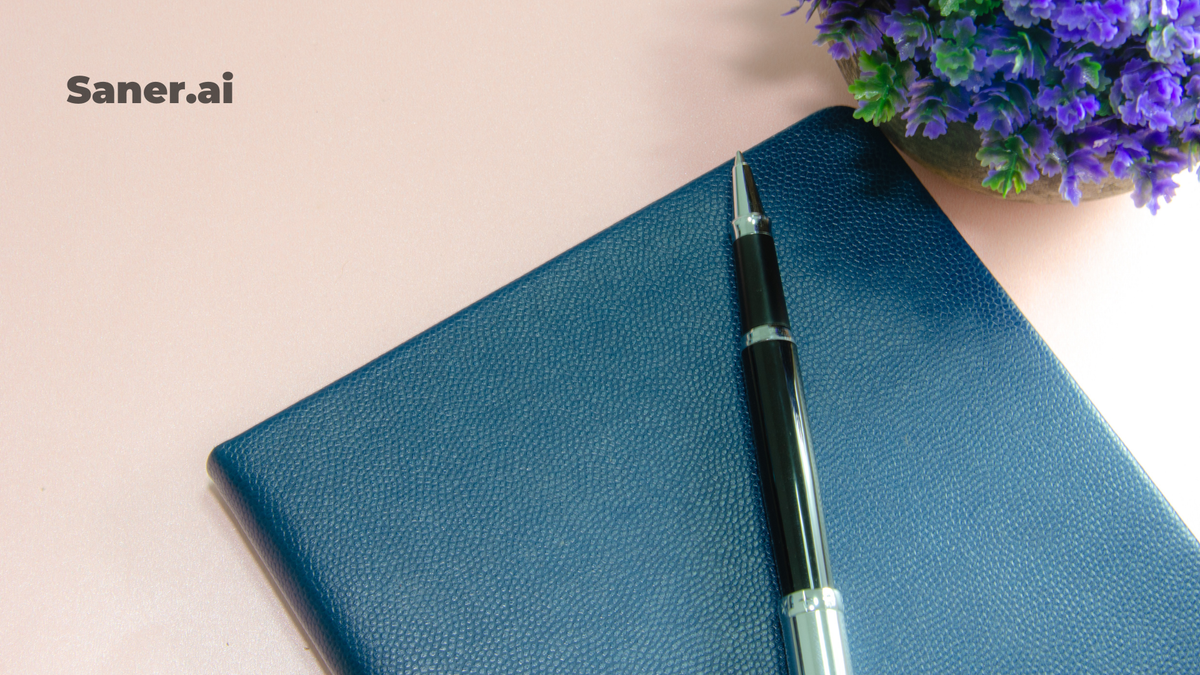
How to Create an ADHD-Friendly Environment in 7 Steps

Designing an ADHD-friendly workspace goes beyond organizing your desk - it’s about creating a space that actively supports your brain’s need for clarity, structure, and calm.
For people with ADHD, physical clutter often leads directly to mental clutter. That stack of unopened mail? It’s not just paper, it’s visual noise, and it chips away at your ability to focus, plan, or feel in control.
This guide will help you:
- Understand how your environment affects attention and stress levels
- Use ADHD-specific strategies to reduce distractions and mental load
- Build a space that works with your brain, not against it
Whether you're rethinking your desk layout, establishing daily reset routines, or just trying to find your phone charger under a mountain of notebooks, this is for you.
I. Why a Clutter-Free Space Matters (Especially With ADHD)
1. Clutter Isn’t Just Visual - It’s Cognitive
Let’s get one thing straight: clutter is more than a mess. It’s a trigger.
When your workspace is disorganized, your brain doesn’t just see “stuff” - it sees unfinished decisions, tasks you haven’t completed, and things screaming for attention.
That’s exhausting.
Studies have shown that cluttered environments can increase cortisol levels (the stress hormone), reduce working memory, and make task-switching harder — all things that are already tough for ADHD brains.
It's like your brain is constantly being pinged by every object in your field of vision:
- “Hey, remember me? You were going to file me.”
- “Don't forget to finish that!”
- “Still haven’t handled this stack!”
And suddenly, it’s 4 p.m., and you’re deep in YouTube rabbit holes, wondering where the day went.
2. The Unique Needs for a Clear Environment for People with ADHD
If you have ADHD, organizing isn’t just “cleaning up.” It’s a full-on executive function workout - involving planning, decision-making, prioritizing, and memory. What seems like a simple 10-minute task can quickly become a spiral of overwhelm.
This doesn’t mean you're lazy or messy - it means your brain is wired differently. It craves clear cues, visual logic, and environments that reduce friction.
In an ADHD-friendly environment:
- You don’t lose focus as often because visual clutter isn’t hijacking your attention
- You’re not constantly triggered by guilt piles ("I’ll deal with this later")
- You can actually start tasks more easily, because the environment feels manageable
The key is to stop trying to create a “perfect” workspace - and instead create one that works with how your brain actually functions.
II. Identify your ideal space

1. Start With Your Style - Not Someone Else’s
There’s no “right” way to organize your workday when you have ADHD - but there is a right way for you.
Before jumping into color-coded systems or minimalist desk setups, pause and ask:
What actually helps you focus? What tends to overwhelm you?
If you have ADHD, recognizing your personal patterns isn’t a luxury - it’s a survival skill. Your brain works differently. That’s not a problem. It’s a design prompt.
Take a few days to notice:
- Do you focus better with music or in silence?
- Does visual clutter stress you out, or keep things top of mind?
- Are you more likely to start tasks if they’re laid out in sticky notes… or hidden in a digital list?
This kind of self-awareness is the first step in building an ADHD-friendly environment, one that supports your energy, not fights it.
Some examples:
- If you’re a visual thinker, color-coded folders or a Kanban board might feel calming.
- If visual clutter overwhelms you, go minimalist: drawers, closed boxes, calming colors.
- If you forget things when they’re out of sight, try an open-desk layout where your “to-dos” stay visible.
There’s no one-size-fits-all system, so experiment. Try one small tweak at a time. You’re not failing if a method doesn’t work. You’re learning what does.
2. Choose the Right Level of Stimulation for Your Brain
In their helpful presentation Build Your Thrive Space, occupational therapists Krysta Longridge and Katie Eichar describe two core types of ADHD-friendly workspaces:
🧘 Low-Stimulation Environments
Think quiet, calm, and clutter-free. These setups minimize distractions and sensory overload - great for deep work and recharging. You might see:
- Neutral colors
- Soft lighting
- Private nooks or noise-canceling headphones
- Just the essentials on your desk
🎧 High-Stimulation Environments
These are lively, flexible, and energizing. Perfect for brains that crave variety or fidget-friendly setups. You might try:
- Background music or white noise
- Standing desks or movement zones
- Bold colors or quirky decor
- Switching between rooms or locations (like cafés, libraries, patios)
Here’s the trick: your needs might change depending on the task or time of day.
That’s okay. Some people even set up multiple mini-zones at home: one for deep work, another for calls, and a cozy corner for low-pressure thinking.
7 Steps to Create an ADHD Friendly Environment
Here are some practical tips to help you build a supportive environment:
1. ✅ Make It Visual - But Not Overwhelming
People with ADHD often struggle with object permanence - if something’s out of sight, it might as well not exist. So, make sure important items are visible and accessible, not hidden in drawers.

Try this:
- Use open shelves or desktop trays to keep go-to items within reach.
- Hang weekly schedules or to-do lists in clear view.
- Color-code items by category (school, work, hobbies).
Just remember: visibility is good, clutter is not. Strike a balance between “easy to find” and “easy to focus.”
2. 📍 Create Consistent Drop Zones
ADHD brains thrive on structure. A simple system - where everything has a “home” - reduces stress and forgotten items.
Set up:
- A wall hook or basket for backpacks and purses
- A tray or folder labeled “School Papers” or “Bills”
- A dish or magnetic strip for keys and essentials
Consistency is key. When things go in the same place every day, you free up mental space for more important decisions.
3. Use Clear Storage Bins
Storage bins aren’t just containers - they’re external memory aids. With clear bins, your brain doesn’t have to remember where stuff goes. You can see it instantly.
What Makes a Bin ADHD-Friendly?
- Clear or labeled: Visibility reduces search time
- Right-sized: Small enough to carry, big enough to be useful
- Stackable or under-bed: Saves space in tight areas
- Easy-access lids or open tops: Reduces decision fatigue
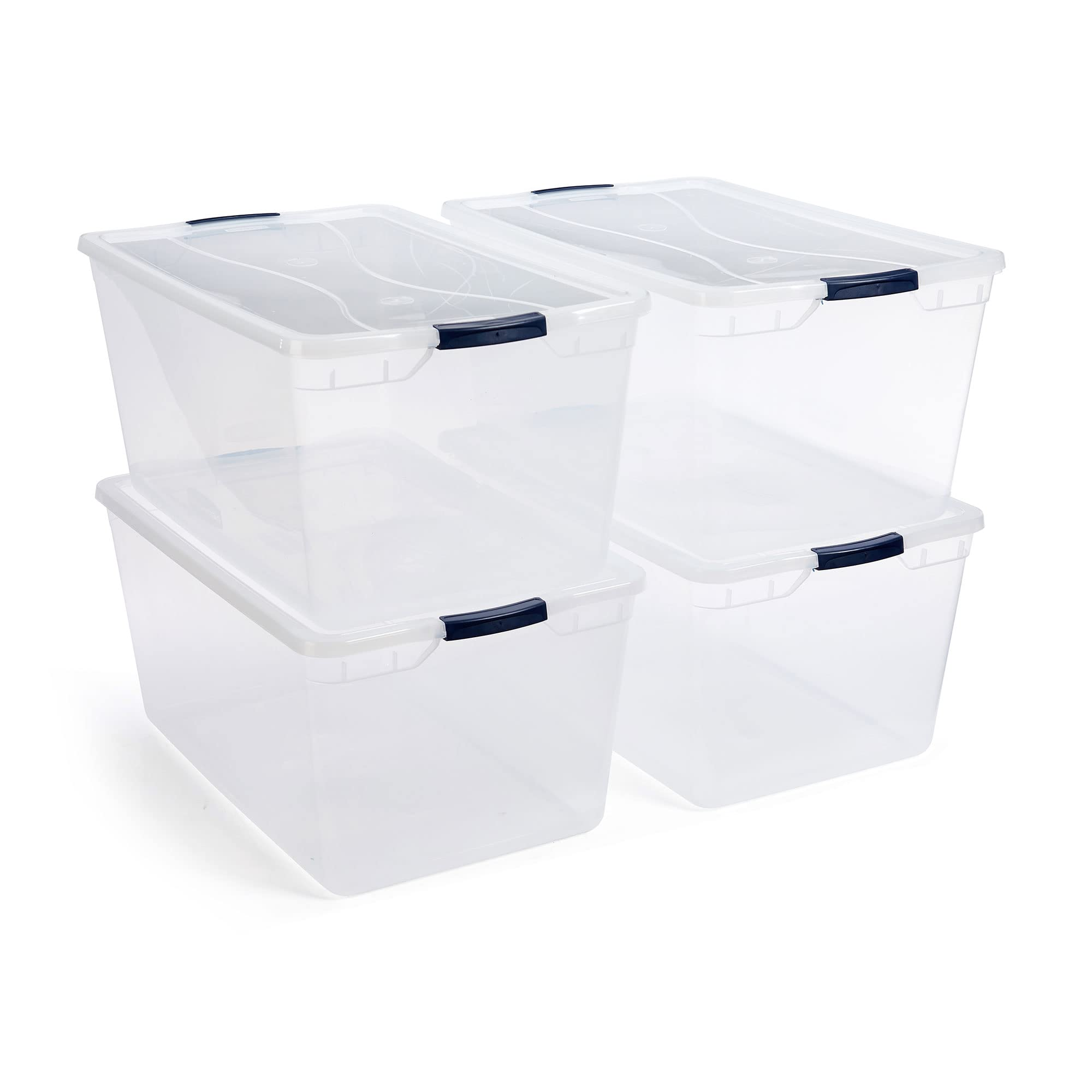
How to Set Them Up:
- Group Similar Items: Art supplies, cables, seasonal clothes, etc.
- Pick the Right Bin Size: Not too deep or heavy.
- Label Everything: Use bold, readable labels. Color-coding works great too.
- Give Each Bin a Home: Store them where you’d naturally use the items.
Why it works: ADHD brains often resist cleanup unless the process is simple and immediate. With clear bins, “putting things away” becomes visual and frictionless.
4. 🧘 Keep Only the Essentials Visible
Too much visual input = cognitive overload.
Even if visibility is helpful, clutter can be paralyzing. A clean desk or surface gives your brain room to breathe.
In a home office, try:
- A clean desktop with only your laptop, lamp, and one notepad
- Floating shelves for your most-used books
- Drawer organizers for things you use weekly, not daily
- Digital apps to replace sticky notes, calendars, or piles of paper
Pro tip: Snap a photo of your ideal desk setup when it’s tidy. Refer back when things start creeping out of place.
5. 🤫 Build a Quiet Zone for Reset and Recovery
For many ADHDers, especially those sensitive to noise or sensory input, having a low-stimulation space can help with emotional regulation and burnout.
This doesn’t need to be fancy. It could be:
- A cozy reading chair with noise-canceling headphones
- A meditation cushion with a soft lamp nearby
- A corner of the room is designated “no screens, no talking.”

What matters is that this space is predictable, calming, and clearly marked as your reset zone. Use it to breathe, calm down, or refocus without external pressure.
6. 🔁 Schedule Regular Environmental Reviews
What works today might not work next month - especially if your needs change. ADHD thrives on intentional adaptation.
How to run a review:
- Pick a time each week or month - Sunday night is great
- Ask: “What’s working? What’s not?”
- Celebrate small wins (like, “I haven’t lost my keys all week!”)
- Fix pain points immediately (e.g., “I keep forgetting to check the tray near the door”)
- Tweak slowly - one change at a time to avoid overwhelm
These reviews help you take charge of your space, not feel controlled by it.

7. 🛠️ Bonus: Essentials for an ADHD-Friendly Workspace
If you work or study from home, setting up a physical environment that supports focus is one of the best productivity hacks you’ll ever use. Here are the essentials:
🪑 Ergonomic Chair
- Supports posture and lets you fidget without distraction.
🧑💻 Desk That Fits You
- A sit-stand desk or L-shaped table gives you flexibility to switch modes when focus fades.
💡 Bright, Natural Lighting
- Sunlight boosts focus. If that’s not possible, use adjustable lamps to keep the area well-lit but not harsh.
🔕 Distraction Buffers
- Noise-canceling headphones, soft rugs, or white noise machines can block sensory overload.
IV. Conclusion
Understanding your own organizational style and establishing daily routines are key steps toward maintaining a clutter-free space that not only looks good but feels good too.
An ADHD-friendly environment isn’t about perfection - it’s about reducing friction and boosting clarity. Small changes like using clear bins, keeping surfaces clean, and reviewing your setup regularly can create huge improvements in focus, emotional regulation, and daily ease.
The best part? You don’t need a full room makeover. Start with one corner, one bin, one habit. Then build from there.
Additionally, you can read the full guide on how to manage ADHD here
FAQ
1. What does it mean to create an ADHD-friendly environment?
Creating an ADHD-friendly environment means designing your physical space, digital tools, and daily routines in ways that support focus, reduce distractions, and lower mental friction. It’s not about being minimal or perfect—it’s about making your space work with your brain, not against it.
This could look like:
- Visual reminders instead of hidden to-do lists
- Noise-canceling headphones for sensory regulation
- Clear zones for different tasks (like work vs. rest)
- Using tools that don’t overload your screen or mind
Whether you're at home, at work, or on your phone, your environment shapes how easily you can focus, and ADHD brains often need more intentional design.
2. Why does the environment matter so much for ADHD?
Because ADHD isn’t just about focus, it’s about how you interact with your surroundings. For someone with ADHD:
- Clutter = distraction
- Too many tabs = shutdown
- Notifications = derailed attention
- Hard-to-find things = forgotten tasks
A well-designed environment reduces decision fatigue, limits context switching, and gives your brain fewer chances to drift.
Think of it like this: if your brain is a browser with 50 tabs open, an ADHD-friendly space closes 30 of them automatically.
3. What are practical ways to create an ADHD-friendly home or workspace?
You don’t need to renovate your house, just make some intentional tweaks. Here are some ADHD-friendly upgrades that work:
For your physical space:
- Use open shelves or labeled bins (so you see what you need)
- Keep frequently used items within reach
- Minimize visual clutter on your desk
- Add soft lighting or calming objects
For your digital space:
- Turn off non-essential notifications
- Use a minimalist app layout (like one task app, one notes app)
- Group similar tools together on your home screen
For your habits:
- Keep a “launch pad” by the door with essentials (keys, wallet, charger)
- Create a reset routine to tidy once a day
- Use recurring reminders for tasks that fall through the cracks
Small environmental shifts often make a big cognitive difference.
4. Are there ADHD-friendly digital tools?
Yes, and choosing the right tools matters. The best ADHD-friendly tools are:
- Visual: so you don’t forget what you can’t see
- Lightweight: so they don’t add clutter or decision fatigue
- Unified: so you don’t switch between five different apps
A few helpful ones:
- Saner.AI – combines notes, calendar, and task management in one space. Great for reducing context switching and surfacing what matters.
- Todoist or Things – structured to-do lists with priority tagging
- Forest or Focusmate – tools for accountability and structured focus sessions
5. How can I make shared environments ADHD-friendly?
If you share your space with roommates, family, or coworkers, communication is key. Here’s how to create a more supportive setup:
- Label zones clearly – “Focus zone,” “Chill zone,” “Noise OK zone”
- Use headphones and sound cues – to signal when you’re in deep work mode
- Set shared expectations – like no interruptions during certain blocks
- Agree on resets – like a 10-minute daily tidy session, everyone joins
Even in shared settings, ADHD-friendly design is possible with small agreements and a bit of structure.
6. What’s the easiest way to get started?
Start small. Try one change from each category:
- Space: Clear your desk and leave only the essentials
- Digital: Mute a few noisy app notifications
- Mental: Set a daily reminder to reset your space
Then build momentum from there. You don’t need a perfect system - just one that removes friction.
Get organized without manual effort

